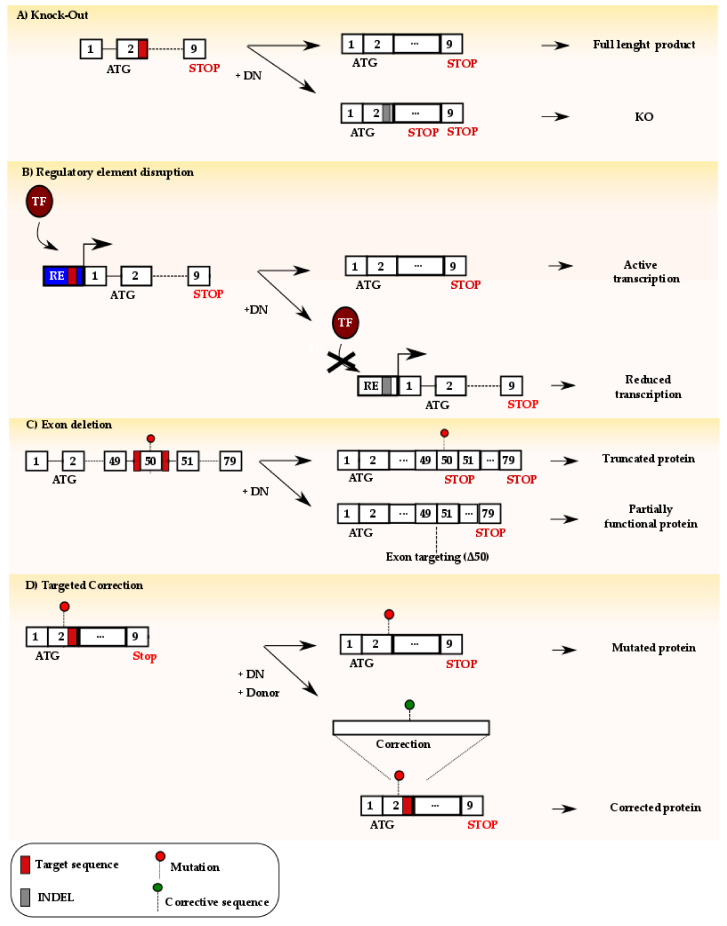Figure 3.
Genome editing using designer nucleases (DN): (A) Targeting of the DN to the coding region of a gene promotes the formation of a DSB which is typically repaired via NHEJ. The subsequent formation of indel mutations (grey box) may generate a premature stop codon, eventually leading to gene inactivation. (B) DN can be targeted to regulatory elements (RE) in order to disrupt the binding site of an activating transcription factor (TF). As a result, downstream gene transcription might be reduced or abolished in a cell-specific fashion as described in Section 6.1. (C) Two DNs can be directed to sites flanking an exon containing a non-sense mutation for its deletion. The resulting gene might result in the generation of a truncated, albeit partially functional, protein. (D) Targeting of a DN in proximity of a genetic mutation and simultaneous delivery of a donor template harboring the correct genetic sequence might result in precise gene editing via harnessing of the homology directed repair pathway.

